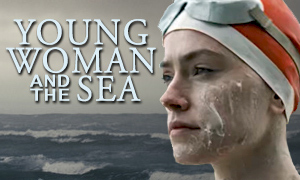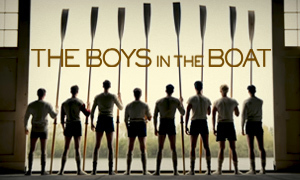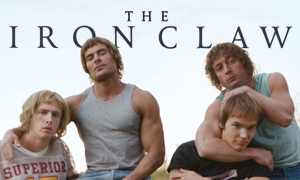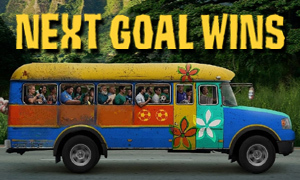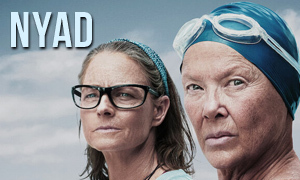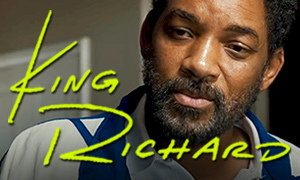Eddie the Eagle: History vs. Hollywood
| REEL FACE: | REAL FACE: |
Taron Egerton
Born: November 10, 1989 Birthplace: Birkenhead, Cheshire, England, UK | Michael "Eddie the Eagle" Edwards
Born: December 5, 1963 Birthplace: Cheltenham, England, UK |
Jo Hartley
Born: March 12, 1972 Birthplace: Oldham, Lancashire, England, UK | Janette Edwards
|
Keith Allen
Born: September 2, 1953 Birthplace: Llanelli, Carmarthenshire, Wales, UK | Terry Edwards
|
Is Hugh Jackman's character based on a real person?
No. In researching the Eddie the Eagle true story, we learned that washed up former ski jumper Bronson Peary (Hugh Jackman), who becomes Eddie's coach in the movie, is an almost entirely fictional character. In the film, it is revealed that the ex-pat American Peary could have been great if ego and alcohol hadn't got in the way. In real life, Eddie learned how to ski jump in Lake Placid under the instruction of two Americans, John Viscome and Chuck Berghorn. Eddie the Eagle screenwriter Sean Macauly told the Adirondack Daily Enterprise that Jackman's character was inspired by a few of the coaches who taught Eddie, but indicated there was no direct correlation to any single coach.
Did Eddie Edwards really have no ski jumping experience?
No. In fact-checking Eddie the Eagle, we learned that the real Eddie had significantly more experience. The man who worked by day as a plasterer had previous experience stunt-jumping over cars and buses (The Hollywood Reporter). He was also an experienced downhill skier and had at first hoped to participate in the Olympics as such. Eddie had narrowly missed making the British downhill team for the 1984 Winter Olympics, a moment that is fictionalized in the movie to make Eddie look more hopeless (Yahoo Sports). By 1986, he was nearly broke and knew he needed to try something new. "I didn't have much money, so thought I'd better find something cheaper to do," says Eddie. "I went along to the ski jumps [in Lake Placid] and thought: That looks alright" (The Guardian). In the movie, Eddie (Taron Egerton) gets the idea to become a ski jumper after seeing it in a poster on his bedroom wall.
As a child, was Eddie really told he might never walk again?
Not exactly. However, he was a fearless child who always found himself paying the price for his bravery. At 10, his kamikaze-style moves as a soccer goalie (which included launching himself at the cleated shoes of rushing opponents) left him with damaged cartilage in his left knee. As a result, he was in plaster casts for the next three years (Sports Illustrated). He learned to ski when he was 13 and found himself skiing on the British national team four years later (PopSugar.com).
Was the real Eddie the Eagle an only child?
No, the real Eddie has a sister, Liz, who is two years younger. In 2007, he helped to save her life by donating his bone marrow to her when she was battling Non-Hodgkin's Lymphoma.
Did Eddie find discount lodging at a mental hospital?
Yes. Though it's not shown in the film, while fact-checking the Eddie the Eagle movie, we discovered that to save money on lodging, Eddie found bargain accommodations at a Finnish mental hospital for one pound a night. It was while staying there that Eddie found out he had qualified for the British Olympic Team. Later, his critics would joke that the asylum was fittingly appropriate. -People.com
In order to earn money as he trained, Eddie worked part-time jobs, including mowing lawns, babysitting, working in hotels and cooking. He traveled the European ski circuit in his mother's car and used a helmet given to him by the Italians and skis from the Austrian team (in the movie, Hugh Jackman's character pillages a lost and found to find better equipment for Eddie). He wore six pairs of socks to fit into his hand-me-down boots. When he broke his jaw, instead of paying to be treated at a hospital, he tied it up with a pillowcase and went about his business. -The Guardian
Where did he get the nickname Eddie the Eagle?
When Eddie arrived in Calgary for the 1988 Winter Olympics, a fan club was waiting outside the airport with a banner that read, "Welcome to Calgary, Eddie The Eagle". A Canadian TV crew was on hand and the nickname took flight. -The Guardian
Is his real name Eddie Edwards?
No. His real name is Michael Edwards. As stated above, fans gave him the nickname Eddie the Eagle when he arrived for the 1988 Olympics in Calgary.
Was Eddie really as clumsy as shown in the movie?
Yes. When he arrived in Calgary for the Olympics, he attempted to exit the airport toward fans who were holding up a banner outside. "I walked towards [the banner] but the automatic doors had been turned off, so I walked into the glass and my skis bounced off the doors, everything broke and I became Mr. Magoo." -The Guardian
Did Eddie really finish last in his Olympic events?
Yes. Eddie the Eagle finished last in all three of his jumps at the 1988 Olympics in Calgary, but he did manage to beat his own personal record. More importantly, he survived the events and avoided serious injury. "You have captured our hearts. And some of you have soared like eagles," remarked Frank King, the games' chief executive, during a speech at the closing ceremonies. -People.com
Is Christopher Walken's Coach Warren Sharp based on a real coach?
No, like Bronson Peary (Hugh Jackman), Warren Sharp is a fictional character. In the Eddie the Eagle movie, Sharp is the U.S. Ski Team coach who had kicked Peary off the team for breaking the rules and being a daredevil.
What does the real Eddie Edwards think of the movie?
While the real Eddie is a fan of the film, he said that "only about 5%" of Eddie the Eagle is a true story. -BBC News
Did Eddie's underdog Olympic performance really capture the hearts of viewers and the press?
Yes. This part of the movie is perhaps the most accurate. Despite Eddie's lack of athletic ability, the media and viewers at home were drawn to him, feeling a sense of kinship because, like many of them, Eddie was just an average guy. "I think I was exemplifying that whole Olympic spirit - a true amateur sportsman coming to a sporting event just because he loved his sport and loved doing it," says Eddie (Yahoo! Sports). As in the movie, this bothered the athletes who had been training since they were 5 or 6. Many of them indeed felt that Eddie didn't deserve to be there.
What did Eddie Edwards do with his life after the Olympics?
In researching the true story behind Eddie the Eagle, we learned that the 1988 Olympics opened doors to numerous endorsement deals and appearances, including an interview on The Tonight Show Starring Johnny Carson. According to Eddie, he netted between 500,000 and 600,000 pounds in 1988. Just four years later, he would declare for bankruptcy, citing that his money had been mismanaged. A former plasterer, Eddie returned to construction work, but he soon found a steady flow of motivational speaking appearances and lectures coming his way. He eventually sold the movie rights to his life story. Over the years, Eddie became part of British folklore, the heroic failure who never gave up on his dream. -People.com
Could someone like Eddie compete in the Olympics today?
No. As stated in the movie, the entrance rules for the Olympic Ski Jump Competition had not been updated for 52 years. However, in 1990, stricter qualification rules were imposed, making it nearly impossible for Eddie the Eagles of the world to ever make the Olympics again. Despite trying to qualify for future Olympics, Eddie would never return. -People.com
Eddie the Eagle Interviews & Ski Jumping Videos
Meet the real Eddie the Eagle via the interviews and ski jumping videos below.
Link-to-Learn More:
